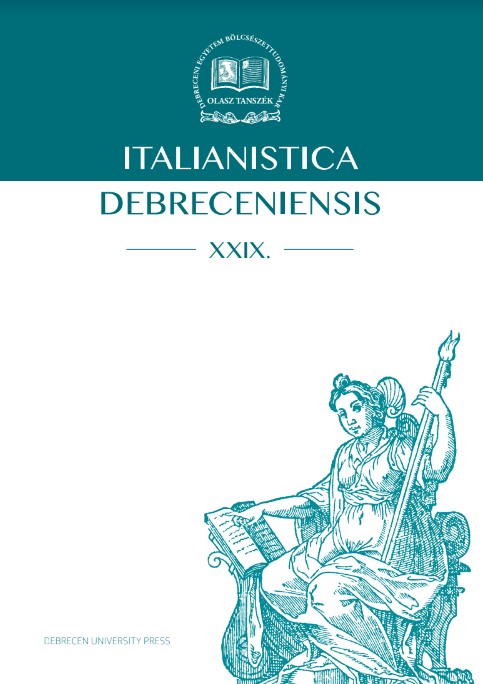Anna Banti's femmine sapute. From Artemisia to Il bastardo
Author
View
Keywords
License

This work is licensed under a Creative Commons Attribution 4.0 International License.
How To Cite
Abstract
Between 1980 and 1981 on the third page of the «Corriere della Sera» Anna Banti published eleven portraits of women painters. The column opens with an article on Sofonisba Anguissola, the author of Autoritratto al cavalletto, a symbol of the reclamation of female identity which calls into question the role assigned to women in the 16th century. It is the culmination of a reflection that began in 1947 with the novel Artemisia. Famous in the news of the time for having been at the center of a rape trial, Artemisia Gentileschi is read as the figure responsible for a talent, the painting, defended at the cost of a loneliness that accompanies her until death. Le donne muoiono is the title of a collection of four stories published in 1951. In the last one, Lavinia fuggita, the theme of vocation returns. In 18th century Venice where composing music was considered a male profession, Lavinia cannot give up the natural inclination to manipulate the scores with jokes of her own invention. The latest female character who refuses to take the traditional way of marriage is Cecilia De Gregorio, protagonist of Il bastardo, the novel published in 1953. Through an austere path but not without doubts, it tells the story of a woman who finds fulfillment in her studies and becomes an engineer head of a company
References
- Antonelli I. (1981), Così sincera da non saper mentire, in «Amica», a. XX, n. 20-21, 26 maggio 1981, p. 73.
- Banti A. (1947), Artemisia, Firenze, Sansoni.
- Banti A. (1949), Matilde non sa scrivere, in «L’Illustrazione italiana», 9 gennaio 1949, p. 57.
- Banti A. (1951), Le donne muoiono, Milano, Mondadori.
- Banti A. (1953), Il bastardo, Firenze, Sansoni.
- Banti A. (1980), C’è una damigella che dipinge a corte, in «Corriere della Sera», 29 ottobre 1980, p. 3.
- Banti A. (1981a), Un grido lacerante, Milano, Rizzoli.
- Banti A. (1981b), Ricordo di Edita Walterowna Zur-Muehlen. Una pittrice dal nord, in «Corriere della Sera», 3 luglio, p. 3.
- Bocelli A. (1954), Un’arte composita, in «Il Mondo», 2 marzo 1954, p. 8.
- Carco F. (1955), L’amico dei pittori, Milano, Martello.
- Cecchi E. (1948), Ha scelto Artemisia perché la oltraggiarono nell’onore, in «L’Europeo», 25 gennaio 1948, p. 10.
- Cecchi E. (1952), Le donne sole nei racconti di A. Banti, in «L’Europeo», 29 gennaio 1952, p. 43.
- Desideri L. (2013), Notizie sui testi, in A. Banti, Romanzi e racconti, a cura e con un saggio introduttivo di F. Garavini, con la collaborazione di L. Desideri, Milano,
- Mondadori, «I Meridiani», 2013, p. 1697.
- Gramigna G. (1952), Le donne muoiono, in «Settimo giorno», a. V, 21 gennaio 1952.
- Montale E. (1954), “Il bastardo” di Anna Banti, «Corriere della Sera», 8 gennaio 1954.
- Orengo N. (1981), Banti: la mia scrittura è donna ma non per i critici, in «Tuttolibri», 5 settembre 1981, p. 2.

 https://doi.org/10.34102/itde/2023/14222
https://doi.org/10.34102/itde/2023/14222